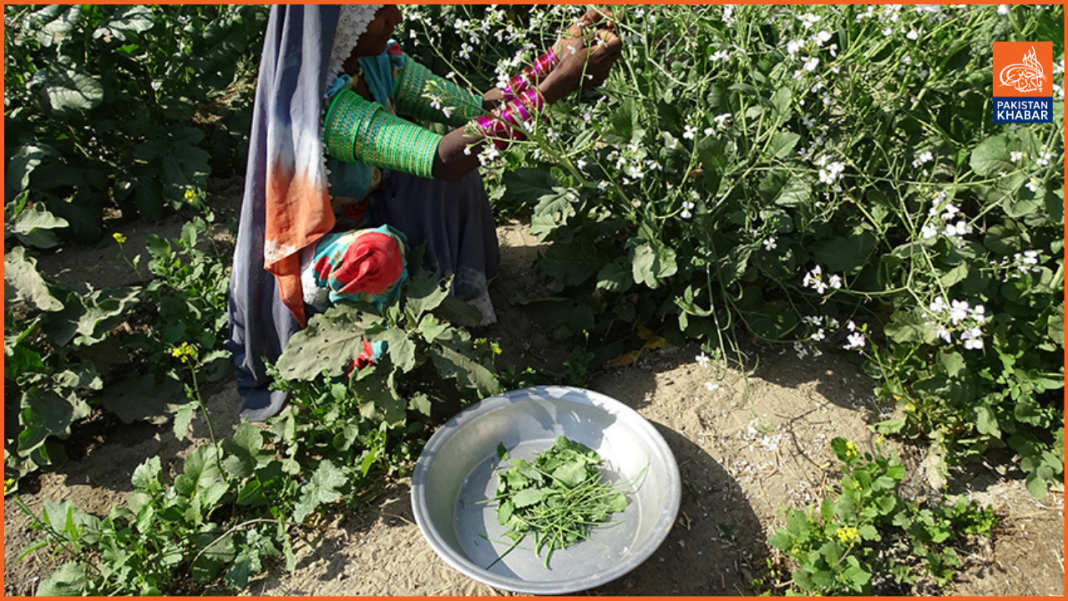Sanghar cotton grower Imran Bozdar had planted cotton on all 150 acres of his land till April last year. Not this year. May has begun, and he has sow 60 acres of cropland.
Prime Minister Shehbaz Sharif appointed a 15-member task force in March to report on the countywide cotton fall in 30 days so policy can be implemented. Mr. Bozdar is part of this task force. Unfortunately, growers miss this.
“Water shortage at my agricultural land is causing sowing delay,” Mr. Bozdar remarked. Nadeem Shah, another progressive farmer from lower Sindh’s Matiari area, could only sow cotton on 30 of his 150 acres till May. Due to water availability, 80 percent of cotton acreage was sown last year. Rotational irrigation supplies brought water after 21 days, he said.
Sanghar and Matiari are left-bank Indus districts. River left banks traditionally grow cotton. Rice, which uses a lot of water, is forbidden to prevent waterlogging. Sindh farmers have little options to switch from cotton to other crops. Punjabis have turned to maize, maize or rice in recent years.
Due to severe water limitations and limited government involvement, lower riparian cotton sowing is under pressure.
The extraordinary river system water shortfall, notably during early Kharif sowing, caused serious water shortages in left bank areas, especially in lower riparian Sindh. Sindh barrages had a 37% shortfall until April. Cotton production fell due to other factors. According to barrage officials, rice-growing areas served by Guddu, Sukkur, and Kotri barrages would increase water demand in May, worsening the water scarcity.
Sindh sowed 26.71pc (168,000 hectares) of the cotton sowing objective (630,000 hectares) by April 2025. In 2025, it was 54% of the 640,000-hectare objective, down significantly from 2024. The early sowing period is gone. Due to limited irrigation, farmers are worried about early-sown cotton survivability as seasonal sowing begins.
Water is essential for crops, but cotton is especially sensitive and has been struggling in Sindh for 15 years. Farmers and the government now play cotton revival differently. Cotton is sensitive to climate change, water shortages, and pest infestations, so farmers’ anxieties are legitimate. In the government’s policy paradigm, these elements snowball, says Sindh Abadgar Board President Mahmood Nawaz Shah.
Cotton production has been falling. Over the past decade, Sindh has seen sugar industry growth in cotton-producing areas like Ghotki, which currently has five sugar mills, signalling encroachment in rich cotton-growing districts.
Ginners are also concerned about cotton sowing region reports of poor cotton cultivation. Since the Pakistan Cotton Ginners Association (PCGA) reported a 34pc decline in countrywide cotton production in 2024 (5.2 million bales) compared to 2023 (8.5m bales), PCGA chairman Dr. Jasso Mal hopes the overall cotton acreage will increase this year. The PCGA warned that 6.53m bales would have to be imported this February.
Sindh suffers after producing 4.2m bales in 2009; producers and the government think a repeat is unlikely. We missed our 4m bale output objective. It seemed possible only in 2023, when Sindh produced 3.8m bales, according to the agriculture department.
Dr. Mal blames government cotton policies for decrease. He said the indigenous cotton business is in peril because of a lack of rules that favour domestic cotton over imports. “The textile industry imports duty-free yarn, while we [ginners] pay 18% sales tax. This disparity hinders our performance, he remarked.
He doubts cotton growers will have enough for 40kg in 2025. Ginners paid Rs8,000–9,000 per 40kg last year. Dr. Mal worries that cotton producers will earn only Rs5,000–Rs6,000 every 40kg this season. “Oil and oilcake made from seed cotton residue were taxed 18%. This is to be recovered from customers to compensate industry production costs, he said.
Nadeem Shah agreed with Dr. Mal that the ginning sector was struggling. Their stocks perish. Ginners will pay cotton growers less to recuperate 18% sales tax. He wonders where sales tax will come from otherwise.
The cotton industry has its own agenda. Their rising production costs, including gasoline, are a problem. They suffer a financial crisis since ginners’ cotton rates are inadequate, and Mr. Bozdar said the prime minister’s Sindh task committee assessed a production cost of Rs6,700 per 40kg. “We got Rs7,000 to Rs8,000 per 40kg from ginners last year,” he says.
Water supply was a major issue for tail-end water users and lower riparians in the Indus Basin Irrigation System. Sindh cotton growers demand irrigation water immediately after planting.



